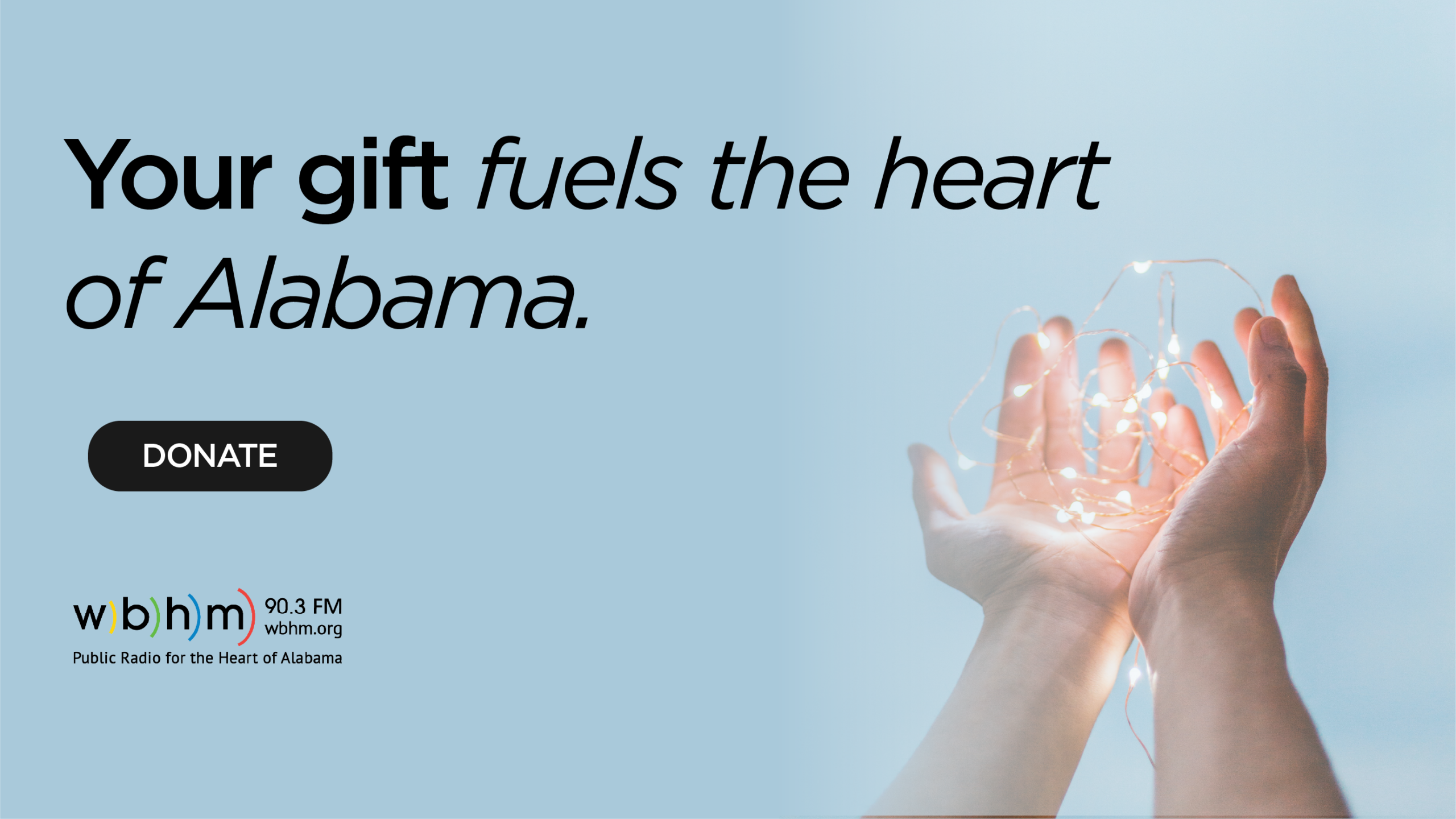Transcranial Magnetic Stimulation to Treat Depression
Using Magnets to Treat Depression
According to the Centers for Disease Control, one in ten Americans suffers from depression. All of us probably know someone who’s living with the condition. Anti-depressants work for some, but many find it difficult to keep their depression at bay with just medicines. WBHM’s Shilpa Reddy has more on an interesting new treatment that has made its way into the psychiatry community in the last few years.
Bryan Olson is a husband, father, former football player and manager at a local healthcare company. For 20 years, he was also a depression sufferer.
“There’s a small part that’s kind of inside of you that drags down everything you try to do. People think you’re happy and fine, and you should be, but there’s something that always holds you back in an odd way.”
Olson was on anti-depressant medication for six years, and while it helped him, it never really fully alleviated his depression. In the last year, his Birmingham psychiatrist, Dr. Paul Weir, told him about a treatment called transcranial magnetic stimulation, or TMS. It’s a procedure that uses magnetic fields to excite brain cells. Dr. Mark George is one of the world’s leading experts on TMS in depression.
 “With TMS, we actually hold a powerful electromagnet on the scalp and turn it on and off, and when we turn it on and off, we create a very powerful magnetic field. It’s a way to get in and tickle the brain non-invasively.”
“With TMS, we actually hold a powerful electromagnet on the scalp and turn it on and off, and when we turn it on and off, we create a very powerful magnetic field. It’s a way to get in and tickle the brain non-invasively.”
When performing TMS, practitioners target a part of the brain called the left prefrontal cortex.
“So that’s if you think about it, right over your left eyebrow, right above where your hairline is, or, in my case, was. It puts things together and allows you to hope and dream and plan and evaluate the world, and also regulates our deeper, emotional part of the brain, called the limbic system.
TMS is currently FDA-approved for patients who have not been entirely successful on anti-depressants. Given his persistent depression despite medication, Bryan Olson decided to undergo a course of the treatment earlier this year.
“You lay in something that’s similar to something like a dentist’s chair. You have a magnet that just rests up against the side of your head.. The largest sensation you get, if you’ve ever put on a hard hat or a football hat and then tap on the helmet with a little mallet.”
The tapping sounds like this. Loud as it is, Olson says he eventually barely noticed it. But what he did notice is how his depression responded.
“Within really the first week, you feel differently.”
“How is your depression now? Do you feel different than when you were on anti-depressant medication?”
“Medication would help; it would lift you a little bit, but that place was still there. That thing you fought was always there. You just had more strength to get through it. This one – it feels like, you know, that part that you couldn’t really explain that was pulling things down – I think that part is gone now.”
Although TMS helped Olson, not every patient responds to it. One major study from 2010 showed that, in patients who have not been entirely successful with medication, TMS has a remission rate of 30%, meaning that patients no longer exhibit any depressive symptoms. While this may not sound like a lot, it’s often better than yet another round of medication.
While the treatment has promise, it’s far from perfect. Dr. Eric Wassermann, Head of the Behavioral Neurology Unit at the National Institute of Neurologic Disorders and Stroke, says that, while we have clear evidence of the efficacy of TMS in depression, we don’t truly understand the science of how magnetic fields can improve symptoms, making refining the treatment difficult.
“If we had a better understanding we would know more about the targeting, and more about the length of treatment required, and more about very simple things, like what angle to hold the coil at. I think this is a technique we can understand, even if we don’t completely at the moment”
TMS is costly and inconvenient. One course costs anywhere from $8,000-$12,000. It requires a hefty time commitment of 4-5 treatment sessions per week, for 4-6 weeks. Insurance companies in the state of Alabama do not cover the procedure. Dr. Bates Redwine is the Director of the TMS program at UAB.
“We can work with patients to try to appeal to insurance companies to cover the procedure, but that’s really all all that we can do as an institution at this point.”
TMS is a complex treatment, with proven safety and efficacy records, but with cost and inconvenience profiles that are major barriers to its use. Still, Bryan Olson says he’d try it again. “Yes, I absolutely would.”
~ Shilpa Reddy June 14, 2012
In the snow, these salamanders get supercool
Blue spotted salamanders have been seen walking across snow and new research suggests how they get by in the cold.
When porch pirates steal medicine instead of holiday gifts
Mail theft can happen around the holidays, but sometimes, instead of getting a new iPad, the thief swipes a mail order medicine. Here's what to do about it.
U.S. and Ukraine reach consensus on key issues aimed at ending the war
The United States and Ukraine have reached a consensus on several critical issues, but sensitive issues around territorial control in Ukraine's eastern industrial heartland remain unresolved.
Despite Vatican-Israel tensions, Catholics and Jews work to build trust in Haifa
Religious leaders started getting together after Oct. 7, 2023, in the hope of preventing a repeat of Arab-Jewish violence that erupted after a previous conflict in Gaza two years earlier.
The strangers who guided her home — and returned with Christmas dinner
Mary Klein had just moved to a new city when she got lost. A couple stopped to help and guided her home. They returned the next day with Christmas dinner.
Crime in the U.S. fell in 2025. Will the trend continue?
Crime rates dropped across much of the U.S. in 2025. That was true for both property and violent crime. And it declined nearly everywhere: In big cities and small towns, and in red and blue states.







